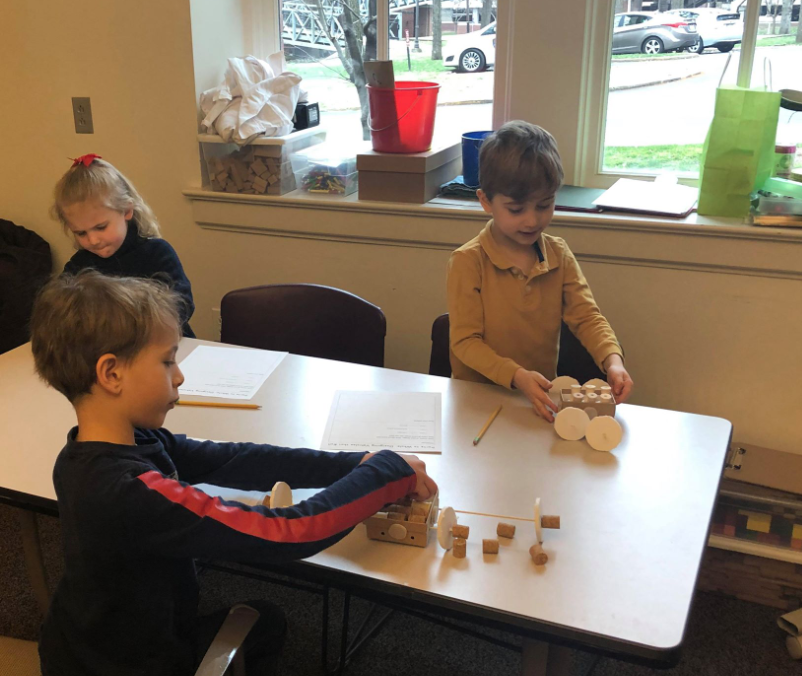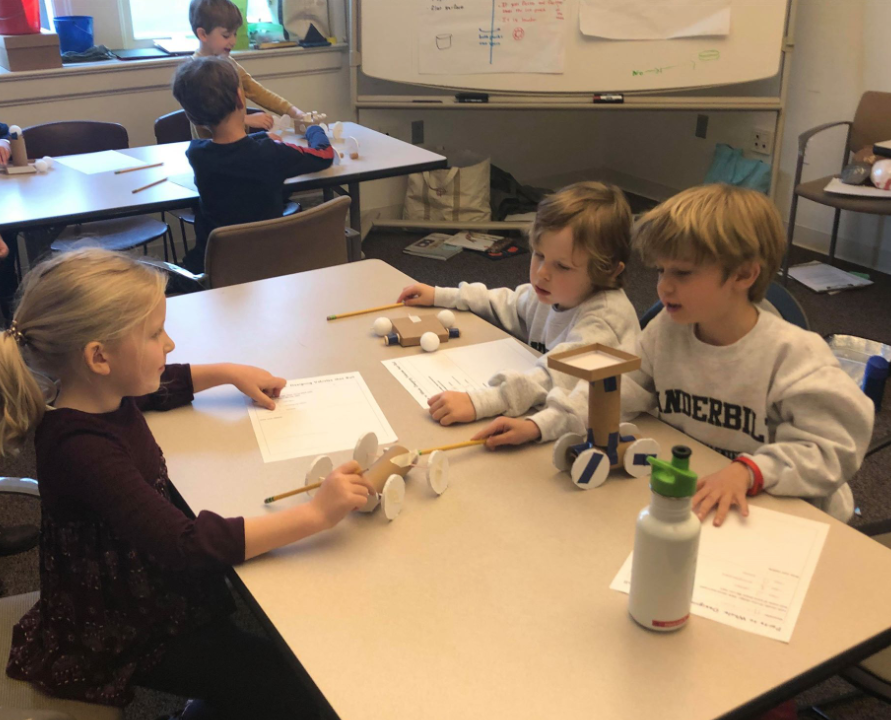Spring SAVY 2019, Day 6 – Discovering the Third Dimension (Kindergarten)
Thank you for sharing in our fun and learning throughout the course and most especially during today’s Shape Museum. Before our museum opened,
- We used our geometers’ eyes to look closely at the spider views from the bedroom ceilings of two of our students. What furnishings and objects did the shapes represent? What objects were tricky for us?
- We investigated form and function by comparing an ice hockey puck – which is very familiar to us at this point – to an adaptation developed for street hockey. How are they different? What similarities and differences did we find when comparing the physical appearance and the performance of the pucks?
- We read the realistic fiction book Galimoto, by Karen Lynn Williams, and got an idea for a shape-changing project your child might enjoy. In the story, seven-year-old Kondi gathers reusable wire with determination and shapes it into a galimoto, which is a toy vehicle. We believe that our experience with vehicles could help us be successful in designing and creating our own galimotos.
- We revisited our vehicles to inventory the shapes used to create them and to sketch the final design. As with the truck, many of us found it challenging to visually deconstruct our assembled vehicles into their parts. As a parent, know that this is a spatial reasoning skill worthy of cultivation.
- Geometers created an end-of-course concept map to show their current thinking about 3-D shapes, and completed a student survey about their experience in the course. Ask: What is a concept map? What did you include on your concept map about 3-D shapes?
Maya and I enjoyed every moment of every Saturday learning together with your children. We hope your family will continue to explore geometry by noticing shapes in the natural and constructed world, working to represent them on paper, challenging yourselves to use precise words to share your thinking, and – most of all – having hands-on experiences that allow you to think about parts of shapes AND shapes as parts. We hope, too, that geometers will remember to ask: Why is this object this shape? What would happen if I changed it?
If your child hasn’t yet discovered the secret of the flip top, click this link for an idea about what to expect. It might take adult fingers and a large flat surface to get started, but after seeing it once we expect your geometer will be sufficiently inspired to persevere until they’ve developed the necessary finger coordination.
Wishing you all good things,
Christy Plummer
Photos from our Final Week


